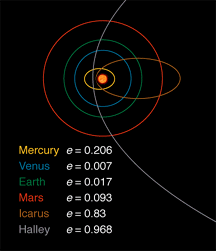A diagram showing the elliptical orbits of some solar system objects.
Click on image for full size
Kepler's 1st Law: Orbits are Elliptical
After many experiments, Kepler discovered that the planets move on
ellipses around the Sun. An ellipse is kind of a stretched out
circle. A real circle has the same width, or diameter, whether you
measure it across or up and down. But an ellipse has diameters of
different lengths. How long the longest diameter is compared to the
shortest one determines the
eccentricity (e) of the
ellipse; it's a measure of how stretched out the ellipse is.
Circles have e=0 because their diameters are all the same. If an
ellipse has one very short diameter, and one very long one, then it is
a very stretched-out ellipse, and has an eccentricity nearly equal
to 1.
Planets do move on ellipses, but they are nearly circular (e
very close to 0). Comets are a good example of objects in our solar
system that may have very elliptical orbits. Compare the
eccentricities and orbits of the objects in the diagram.
Once Kepler figured out that planets move around the Sun on
ellipses, he then discovered another interesting fact about
the speeds of planets as they go around
the Sun.
You might also be interested in:
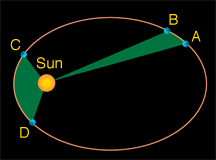
Kepler realized that the line connecting the planet and the Sun sweeps out equal area in equal time. Look at the diagram to the left. What Kepler found is that it takes the same amount of time for the
...more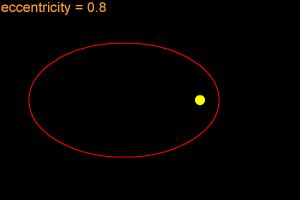
Do you think Earth moves around the Sun in a circle? That is almost true, but not quite. The shape of Earth's orbit isn't quite a perfect circle. It is more like a "stretched out" circle or an
...more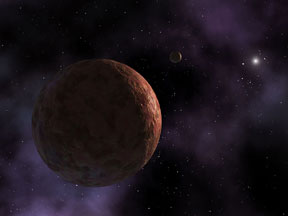
Astronomers have found a new object in our Solar System. The new object is named Sedna. Astronomers are calling Sedna a "planetoid". A planetoid is smaller than a planet but bigger than asteroids or comets.
...more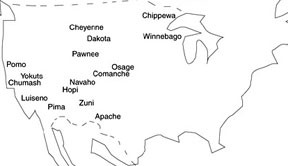
People have been living in North America for a long, long time. The first people to live there were the Native Americans. They didn't have clocks or calendars so they watched tides, the Sun, the Moon,
...more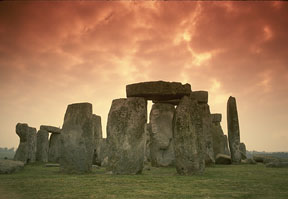
Man has always observed the sky. By watching the Sun and Moon, early man could tell what season was coming next. They had to know this to be able to farm and hunt. Archeoastronomy started in the 1960's
...more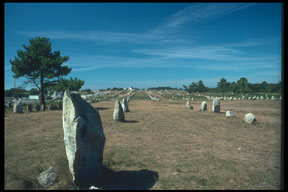
The stones of Carnac, France, are very famous because there are a lot of them and because they are so old! The oldest stones found in Carnac are from about 4,500 B.C. That's older than the stones at Stonehenge!
...more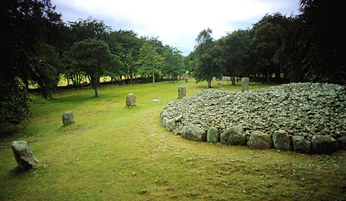
You may have heard of the lake called Loch Ness, where people think they've seen the Loch Ness monster. Near Loch Ness there are three giant stone tombs you may not have heard of...they are called the
...more


